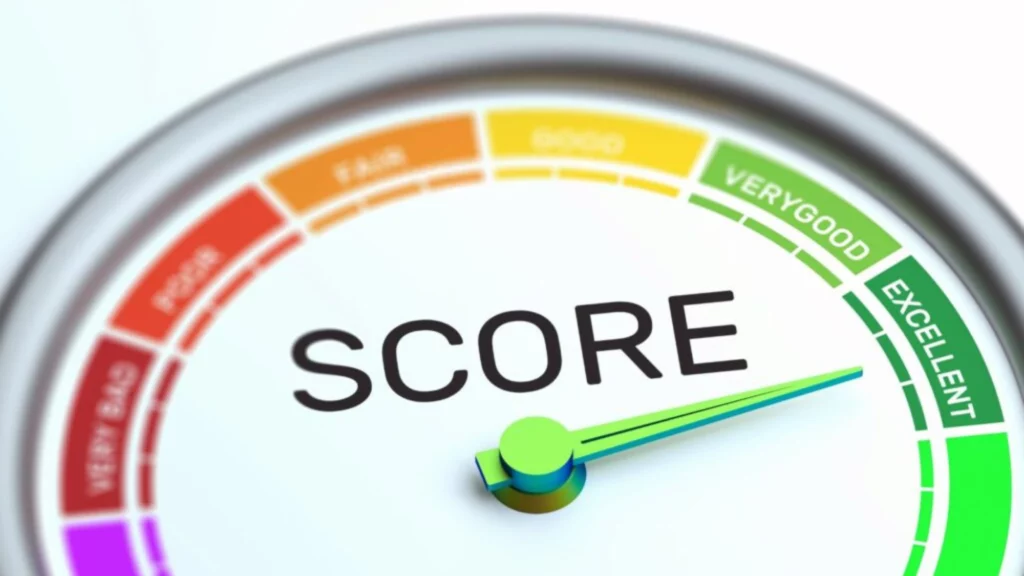Maybe you started a Google Ads campaign without much thought or consideration. Somebody might have told you that it’s the right thing to do marking-wise, and you did it. Or maybe it was a deliberate and well-thought choice. Either way, investing in ads on Google was a smart decision.
Now, you might be wondering why? Well, the average conversion rate for Google Ads is 75%, and on average, Google delivers an 8:1 return on investment (ROI). That means that for each dollar you spend, you will be getting eight dollars back. That’s a pretty good deal if you ask us.
But you can’t just start a few advertising campaigns on Google and call it a day. There is much work to be done, and you need to improve your ads’ performance continuously to get the results you want.
So, how can you improve your Google Ads performance? Let’s see:
Organize your Ads

It’s good to experiment with Google Ads and check out all the features, but once you create your ads and your campaigns, you need to organize them.
Google offers six different types of ads, so make sure you use those that will benefit your business most. If you have a couple of different kinds of ads, separate them accordingly.
After you create your ads, you need to have ad groups and ad campaigns. Let’s break it down and see what these are.
Ad groups have one or more ads, and ad campaigns have one or more ad groups. Usually, ad groups have a particular theme. They revolve around a product or a service. The best practice is to keep ads, ad groups, and ad campaigns as organized as possible.
Organize Google Ads Ad Groups
But beware! Creating too many campaigns and ad groups might stretch out your budget. If you’re a small business or have a limited budget, it’s best to create one or two ad campaigns and concentrate on them.
You need to keep track of all of your ad groups, ads, and keywords. Note down how many ads and keywords are in each ad group and check how relevant they are for the group.
Many recommend that you should have around 30 keywords and two to three ads per ad group. Everything needs to be relevant, from the keywords used in your ad’s text to your landing page.
Understand The Power of Keywords

Now, when it comes to keywords, there’s a lot to unpack. Not only when it comes to how to improve Google Ads, but in general keywords are crucial part of PPC (pay-per-click) advertising.
In fact, there are five things you should take into account:
1) Do your research.
But let’s start by saying that you’re going to have to spend some time researching your keywords. Google Analytics is your friend. Find out what words people use to find the products you’re selling. Moreover, see which of those words drives the most traffic. Don’t forget long-tail keywords – as they make for more specific searches.
2) Don’t forget about negative keywords.
Just like the name says, this is the opposite of a keyword. How do they work? If you include a set of negative keywords in your campaign, this will ensure that your ad won’t show if someone types those words into Google.
But why would you want that? Easy. Negative keywords will ensure that the people who aren’t in your target market won’t come across your ad. Using negative keywords will help your click-through-rate.
You can also use a PPC optimization software to help you tackle the challenge of how to optimize a Google Ads campaign.
3) Organize your keywords.
One of the solutions to high-quality scores is powerful relevancy between the search query and your ad. To do that, you will need to arrange your keywords into effective groups. All of the keywords in an ad group should have a powerful level of meaning.
With targeted ad groups, you will attract a specific audience and deliver concentrated ads – this will improve CTR. Naturally, you’ll get praise from Google for ad relevance.
The most reliable solution is to classify your keywords by theme, segment these groups into subgroups, etc. You can create a hierarchy of small, easy-to-handle keyword groups. Immediately you can write laser-focused ads or sets of ads to test and create a landing page for each group.
4) Don’t fall into the trap of dynamic keywords.
If it has ‘dynamic’ in the title, it must be good, right? Actually, it isn’t for your quality score anyhow.
This feature of optimizing Google Ads allows you to include the user’s exact search term anywhere in your ad copy. It is very handy, but you risk creating ads with unrelated and pointless messaging, something that is frowned upon when you are seeking to increase your quality score.
Aside from this, it can lead to inadequate ad messaging that isn’t engaging in any way potential customers. It’s best to control what will appear in your ad copy.
When you employ single keyword ad groups, it implicitly reduces the need for dynamic keyword insertion in the first place.
5) Bid on your branded keywords.
Moreover, if you rank great organically for your branded terms, it can be a substantial chance to still bid on these terms. Your joined CTR will boost if both paid and organic search results are showing.
Branded ads will also reach the highest CTRs across your entire account, which is major for quality scores across the account.
As it is, your brand and you can create relevant ads and landing pages easily; you will likely achieve a quality score of 7 or above. Also, those searching for your brand are most certainly high-intent, so more than likely to click on your ad which represents another win for your CTR.
Regularly Optimize Your Google Ads

Having the right keywords is vital because that is what you are bidding for. If you’re looking for a short answer to how to improve Google Ads performance, it’s keywords.
So that’s where your money goes. If you don’t have well-researched keywords, then you’ll spend your budget foolishly.
But even if the keywords don’t change for a while, bids can. Depending on the market and the competition, bids can increase or decrease. This is why you need to pay attention and optimize your bids and your keywords regularly.
Also, don’t forget that a significant number of people shop and do research on their phones. Make sure you are running ads for both computers and mobile devices.
Supercharge Your Ad Copy
These are not the only things you need to optimize. You should also change the copy of your ad once in a while. Use your keyword research and put the best-performing keywords in your copy. You can also experiment a bit and see if longer copies or shorter ones grab your customer’s attention. And most importantly, don’t forget your CTA.
Pay Special Attention to the Ad Quality Score

Your Quality Score can tell you exactly how successful your campaign is, as it measures the ads’ quality in your PPC campaign. Not only that, but it also measures how relevant they are and how well they do.
Why do you need to know about the Quality Score?
- It determines your cost-per-click
- It determines the position of your ads in the ad auction process
- Understanding how it works can help you tweak your ad campaign to reduce your cost-per-click and increase your revenue
The bottom line is that even if you’re a small business owner how to improve google ads performance shouldn’t be an obstacle for you. Even if you can’t afford to invest in advertising like your bigger competitors might be able to, optimizing your ad campaigns and increasing your Quality Score will, in turn, increase your chances to be seen in Google.
How to Improve the Quality Score
Essentially, your Quality Score depends on three elements:
- Expected click-through rate – meaning how likely it is for someone to click on your ad when searching for a keyword in Google
- Ad Relevance – which refers to how well your keywords relate to your ads
- Landing Page Experience – how relevant your landing page is for people who click your ad
So, ask yourself:
- When people type a keyword into Google, does it make sense for my ad to come in results?
- Does my ad match the intent of the keywords?
- Is my ad text and offer compelling to my target audience?
- Does my landing page match the message of the ad?
- Is my landing page mobile-friendly?
- What about the page speed of my landing page? Does my page load fast enough?
If you have to answer one or more of the questions with no, you know exactly where to start to improve the Quality Score. This may mean experimenting with different ad copy or Call to Actions, creating custom landing pages for the different keyword clusters (to better match users’ search intents), or even taking a step back to keyword organization to make sure your keywords are clustered into themes with separate ad groups and matching ads to increase ad relevance.
It’s a lot of work, but it definitely pays off! Improving all elements of the Quality score will result in higher ad placement, improved click-through rates, and lower minimum bids for keywords – which translates into a much-improved ROI.
Use Remarketing

Let’s say a person sees your ad and clicks on it. The landing page happens to be the product page, so the potential customer visits your product. But they decide to keep on looking and exit your website.
This is when you need to intervene and use remarketing and add another piece to your puzzle in how to improve Google Ads performance. You will be showing your ads to this person multiple times until they decide to go back and make a purchase.
Use Remarketing to Boost Google Ads Conversion
Remarketing doesn’t always work, but according to studies, it does increase your conversion chances considerably. The potential customer already showed their interest in your product. You just need to convince them to return to it.
To use this feature, you will have to go to the campaign’s additional settings section and click on “Audiences.” In this field, you can select the option for remarketing, choose the audiences you’d like to add, and finally, save your changes.
Automate your Google Ads Campaigns

By far, the best way of how to improve google ads performance is to automate the whole process. And now, you can easily do that with Adspert!
How does Adspert work?
To put it simply, Adspert uses the help of artificial intelligence to analyze millions of data points and optimize your online advertising campaigns. This involves all the processes related to keyword maintenance, campaign optimization, and bid changes.
But you might be more interested in the benefits you’ll get from using Adspert rather than the mechanics behind the platform. First and foremost, Adspert saves you time.
With Adspert, you don’t need to look into keywords and change them every couple of days, nor do you need to adjust your bids every day. And because Adspert is so easy to use, you won’t have to spend time learning all the features.
Adspert also works on different platforms. So if you’re thinking of advertising on eBay, Amazon, or Bing, we’ve got your back. Using our platform, your campaigns will be optimized all the time, which means that your conversion rates and profit will increase considerably.
Are you still not convinced? Then ask for a free demo today and see just how much Adspert can help you.
Conclusion
Optimizing your Google Ads campaign is crucial for driving sales growth and avoiding budget drain. Organize your ads, understand the power of keywords, and optimize regularly to improve performance.
Pay special attention to the Quality Score and leverage remarketing to increase conversion chances. Consider automating campaigns with a PPC optimization tool like Adspert for time-saving and improved results. By implementing these strategies, you can maximize your Google Ads performance and achieve a strong ROI.




